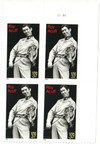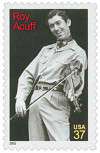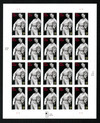
# 3812 - 2003 37c Roy Acuff
37¢ Roy Acuff
City: Nashville, Tennessee
Quantity: 52,000,000
Printed By: Avery Dennison
Printing Method: Photogravure
Perforations: Serpentine Die Cut 11
Color: Red, yellow, black
First Grand Ole Opry Performance
On November 28, 1925, the Grand Ole Opry was founded as the WSM Barn Dance.
In 1924, a Chicago radio station began airing the National Barn Dance, one of the first country music radio programs in the country. The following year, producers at WSM radio station decided to make their own version. They hired the Chicago show’s longtime announcer George D. “Judge” Hay and produced their first episode of the WSM Barn Dance. The radio program was produced in the fifth floor studio of the National Life & Accident Insurance building in downtown Nashville. Their first guest was 77-year-old fiddler Uncle Jimmy Thompson.
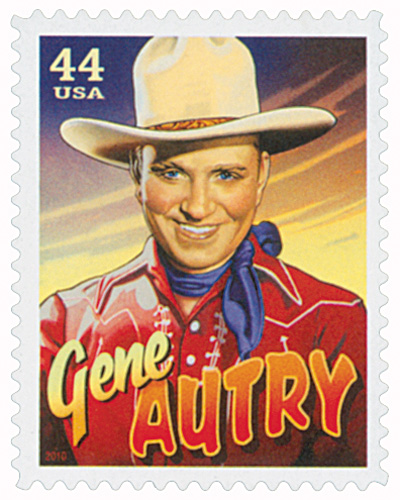
Early performers on the program included the Fruit Jar Drinkers and the Crook Brothers. Uncle Dave Macon became the show’s first star the following year. The show adopted its famous name on December 10, 1927. That night, announcer George D. Hay opened the program with, “For the past hour, we have been listening to music taken largely from Grand Opera. From now on, we will present the ’Grand Ole Opry!’” (The show followed an NBC music appreciation hour.)
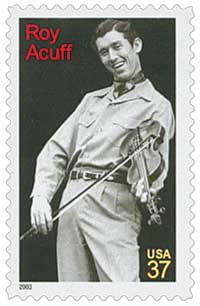
Over time, audiences attending the shows grew and they could no longer accommodate such large crowds in their small venue. The show changed venues four times between 1934 and 1943, finally settling at the Ryman Auditorium. To reduce crowd sizes, they began charging a 25¢ admission fee, but fans still filled the seats. During this time the show also grew from one hour to four, and began hiring professional performers.
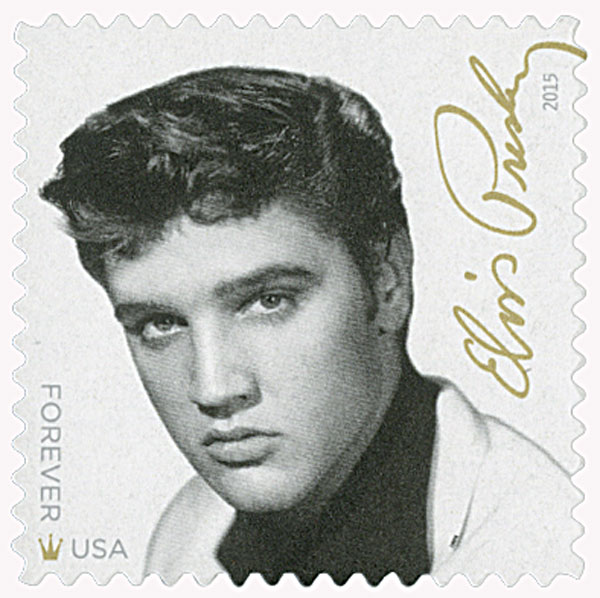
The Grand Ole Opry made its national debut in 1939 on NBC Radio. Roy Acuff served as the first host of the segment, known as The Prince Albert Show (after its sponsor). In the coming years, a number of country music stars took the Opry stage. Among them were Hank Williams, Patsy Cline, Marty Robbins, the Carter family, Bill Monroe, Ernest Tubb, Kitty Wells and Minnie Pearl.
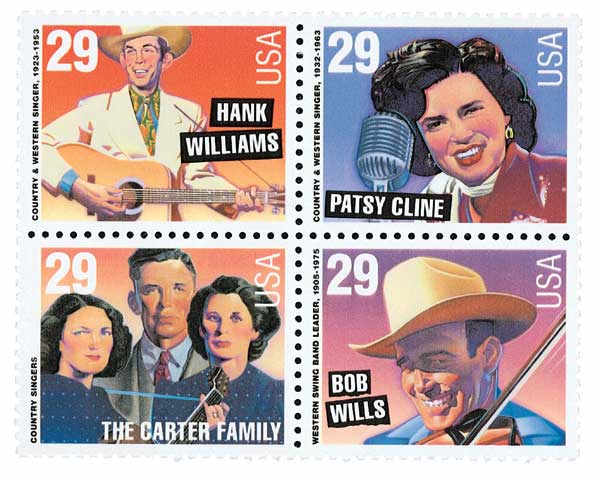
In the 1970s, the Opry once again outgrew its home and began planning an even larger venue. In June 1972, they opened Opryland USA Theme Park and the Opryland Hotel. The new 4,000-seat Opry House opened two years later. President Richard Nixon attended the event and played a few songs on the piano. Though the theme park closed in 1997, the Opry House continues to serve as the show’s home. Also in the 1990s, the Opry renovated its former home, the Ryman Theater, where it presents its winter performances for three months every year.
37¢ Roy Acuff
City: Nashville, Tennessee
Quantity: 52,000,000
Printed By: Avery Dennison
Printing Method: Photogravure
Perforations: Serpentine Die Cut 11
Color: Red, yellow, black
First Grand Ole Opry Performance
On November 28, 1925, the Grand Ole Opry was founded as the WSM Barn Dance.
In 1924, a Chicago radio station began airing the National Barn Dance, one of the first country music radio programs in the country. The following year, producers at WSM radio station decided to make their own version. They hired the Chicago show’s longtime announcer George D. “Judge” Hay and produced their first episode of the WSM Barn Dance. The radio program was produced in the fifth floor studio of the National Life & Accident Insurance building in downtown Nashville. Their first guest was 77-year-old fiddler Uncle Jimmy Thompson.

Early performers on the program included the Fruit Jar Drinkers and the Crook Brothers. Uncle Dave Macon became the show’s first star the following year. The show adopted its famous name on December 10, 1927. That night, announcer George D. Hay opened the program with, “For the past hour, we have been listening to music taken largely from Grand Opera. From now on, we will present the ’Grand Ole Opry!’” (The show followed an NBC music appreciation hour.)

Over time, audiences attending the shows grew and they could no longer accommodate such large crowds in their small venue. The show changed venues four times between 1934 and 1943, finally settling at the Ryman Auditorium. To reduce crowd sizes, they began charging a 25¢ admission fee, but fans still filled the seats. During this time the show also grew from one hour to four, and began hiring professional performers.

The Grand Ole Opry made its national debut in 1939 on NBC Radio. Roy Acuff served as the first host of the segment, known as The Prince Albert Show (after its sponsor). In the coming years, a number of country music stars took the Opry stage. Among them were Hank Williams, Patsy Cline, Marty Robbins, the Carter family, Bill Monroe, Ernest Tubb, Kitty Wells and Minnie Pearl.

In the 1970s, the Opry once again outgrew its home and began planning an even larger venue. In June 1972, they opened Opryland USA Theme Park and the Opryland Hotel. The new 4,000-seat Opry House opened two years later. President Richard Nixon attended the event and played a few songs on the piano. Though the theme park closed in 1997, the Opry House continues to serve as the show’s home. Also in the 1990s, the Opry renovated its former home, the Ryman Theater, where it presents its winter performances for three months every year.








